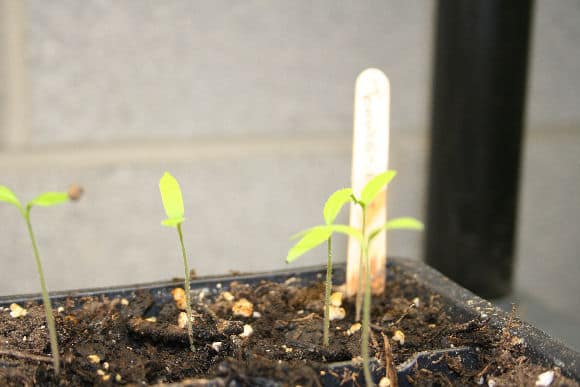Understanding the information in seed catalogs is an art unto itself. Each catalog states cultivation, growth and planting information differently on its glossy pages. There are enough similarities, however, that the average home gardener can learn a few simple tricks to decoding the seed catalogs.

Understanding the Information in Seed Catalogs
I like to tell friends who are just starting a garden to focus on the important, unchangeable facts first. For example, you can amend the soil so that the pH value is closer to what a plant likes, but it’s almost impossible to change the light in the area where you want to grow a garden. Similarly, it is impossible to change your gardening zone, although you can make some adjustments to warm up an area a bit earlier than Mother Nature determines. But for the sake of the beginner’s out there reading this, we’ll leave it that you can’t change your zone – which means that the average frost date in the fall and the frost-free or spring planting date is pretty much set. If you live in my part of the world, the Piedmont region of Virginia, your tender annuals, perennials and vegetables can go outside starting around April 20th, give or take.
If you’re new to seed starting and shopping online or from catalogs for your plants, understanding the information in the seed catalogs starts with finding the catalog’s key. This is simple a few pages or a page that explains the symbols the company uses next to the plants, such as a sun-shaped symbol to indicate light requirements or an initial like A, P or B to indicate Annual, Perennial, or Biennial.
Read the Descriptions
Once you find the key, the next important step is to actually read the description. It’s easy to fall in love with a pretty face so to speak, and I have done that too many times. When it’s January and cold and you can’t go play in the garden, the next best thing is to sit down with all your seed catalogs and look at all the pretty pictures. You flip through and one picture just takes your breath away. You think, “Oh gosh, I’ve got to have that plant!” Make sure you read the description fully next to that special newcomer to the catalog. Note how tall it grows – if it’s a tall plant, and you have space only along a sidewalk border, it’s not a good choice. Similarly, if the only area you have is a wide open space, one or two bushy plants are going to get lost visually among the other plants in the garden.
Take an Inventory of Your Seeds
I’ve got my seed catalogs ready. Tonight, I take inventory of the rest of the garden seeds. Hubby has been busy creating the new walk-in pantry area in the basement. I am very blessed to have a husband who is handy around the house. He is building pantry shelves for all my canned goods, my canning pots and accoutrements, root cellar vegetables such as potatoes and sweet potatoes (and eventually fruit when the orchard begins producing in abundance) and our emergency preparedness supplies such as bottled water.
But the area he is building out in the basement used to be the place where I kept all my seed starting equipment. We’re moving it to a temporary location, and everything is in disarray just when I need it organized to start seeds in a week or two. No matter; moving it made me realize how many open packages I have, how many packages I bought last year and never used, and what I’m missing. I bought seed starting soil last week at Tractor Supply (great sale, by the way) and have my old cake frosting cans ready to be cut into strips for plant labels. The trays are waiting in the shed for their debut. This weekend, we check and test all the lights on the indoor seed starting shelves, check the seeds, and order the rest. My focus is again on the vegetable garden and I have almost narrowed down all my choices except for the darned asparagus. Who would have thought asparagus would be such a nerve-wracking choice? Then again, if you knew me 15 years ago, who would have thought I’d be debating the merits of Jersey Giant or Jersey Knight and itching to play in the dirt again?





The fun of getting all the seeds together. I picked up some packets at a store the other day and am planning to make my internet order this weekend.
Good luck on the asparagus!